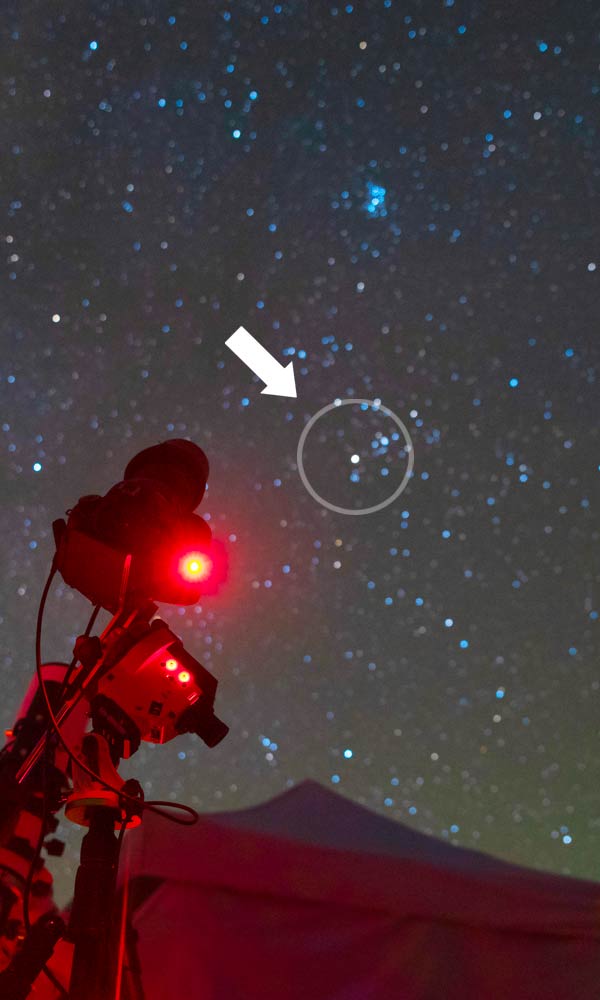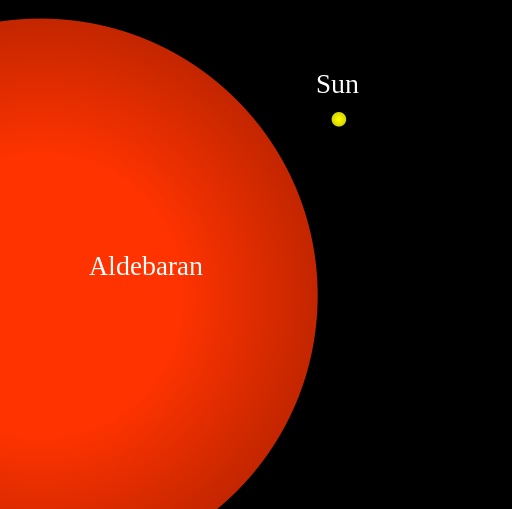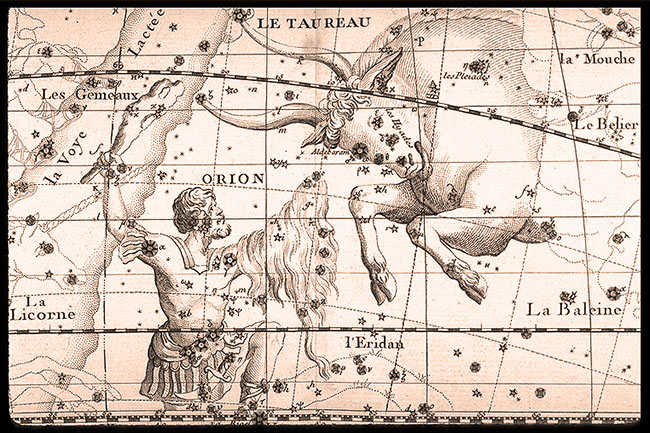Aldebaran Star | The Eye of the Bull
Aldebaran (pronounced “al·deh·br·uhn”) is the brightest star in the constellation Taurus and is a prominent winter and spring star for those in the northern hemisphere.
The star’s reddish-orange color marks the fiery ‘eye’ of the bull, which can be found in the V-shape group of stars representing the bull’s face.
At an apparent visual magnitude of 0.86, Aldebaran is one of the top 15 brightest stars in the night sky. In Arabic, Aldebaran means “the follower”, because it follows the bright Pleiades star cluster as it rises in the night.
It is nearly 66 light-years from Earth, and in two million years, the Pioneer 10 NASA space probe, which is currently out in space, will make its closest approach to Aldebaran.
To capture the deep-sky image above, I used a small star tracker to match the apparent rotation of the night sky. I took several long-exposure images and stacked them together to reveal the dark dust and regions of intense hydrogen gas nearby.
• Constellation: Taurus
• Type: Red giant, K5 III
• Distance to Earth: 66.5 light-years
• Surface temperature: 3,900 +50 K
• Right ascension: 4h 35m 55s
• Declination: +16° 30’ 33”
• Radius: 44 R
Aldebaran Fast Facts:
- Which constellation is Aldebaran in? The Aldebaran star is located in the constellation Taurus.
- Which star is brighter, Aldebaran or Betelguice? Betelgeuse (0.5 magnitude) is brighter than Aldebaran (0.8 magnitude).
- What is the color and temperature of Aldebaran? Aldebaran has an orange/red color with a surface temperature of 3,900 K.
- How far away is Aldebaran from Earth? Aldebaran is about 65 light-years away from Earth.
- How bright is Aldebaran? Aldebaran has an apparent visual magnitude of 0.8
- What does Aldebaran mean in Arabic? “The Follower”
Aldebaran compared to the Sun
Aldebaran is much larger than our Sun, about 44 times the radius of our Sun to be exact. In the graphic representation below, you can see just how much larger Aldebaran is.
Although Aldebaran is cooler than our sun (surface temperature of 3,900 K), it is 400 times more luminous due to its massive size.
Aldebaran vs. Sun size comparison. Mysid, Public domain, via Wikimedia Commons.
Aldebaran Star Type, Temperature, and Luminosity
Aldebaran is a red giant star, known for its orangish color and slightly cooler temperatures (when compared to the Sun). It is the cooler temperatures that give the star its color. At 3,700°C, it is far cooler than the Sun at 5,500°C.
As a red giant star, it has used up the hydrogen reserves in its core and instead fuses hydrogen in a shell around a helium core. This outer shell has expanded 44 times the Sun’s diameter and has resulted in an increase in the star’s luminosity – which is 153 x brighter than the Sun (in visual light).
There are studies and data to suggest Aldebaran could be a multiple star system, with a companion star that orbits the star. It is also possible that Aldebaran is a host of a massive exoplanet that is bigger than Jupiter.
Where is Aldebaran located?
Aldebaran is in the constellation Taurus, a large constellation in the northern hemisphere. It is surrounded by the Orion, Auriga, Perseus, and Cetus constellations. The Pleiades star cluster is also located within the Taurus constellation boundaries.
The best time to observe this star is in the winter and spring, starting in early December (shortly after sunset) until May when it is low in the sky dipping below the horizon at the end of the month.
How to Find Aldebaran
Aside from it being the 14th brightest star, its orangish color and location make Aldebaran a fairly easy star to locate in the night sky. It is also located near the popular and distinct asterism known as Orion’s Belt.
If you draw an imaginary line through the three stars in Orion’s Belt, in the opposite direction of Sirius, Aldebaran is the first star in its path.
And while Aldebaran is not officially part of the V-shaped Hyades cluster, it can be used to help locate the star which can be found along the V pattern.
In the image above, you’ll notice how the orange Aldebaran stands out in the Hyades star cluster near the Pleiades, making it easy to identify.
Mythology
Aldebaran is of Arabic origin, meaning ‘the follower’. It is thought that this represents a hunter following its prey (i.e. the star cluster Pleiades) or because Aldebaran rises behind the Pleiades.
Several different cultures shared the concept of Taurus as the bull, including the ancient Greeks, Egyptians, Babylonians, and Romans. Though some Native American cultures depicted a bison, instead of a bull, and for the Inuit people, a polar bear.
The Constellation Taurus from the Great Celestial Atlases.





